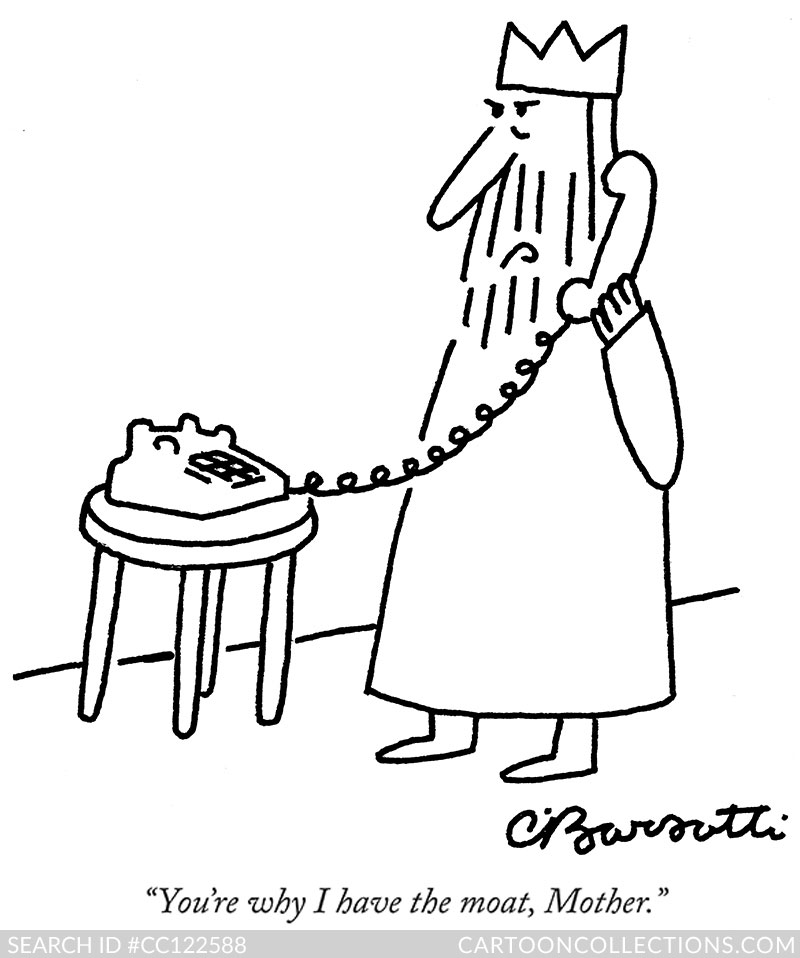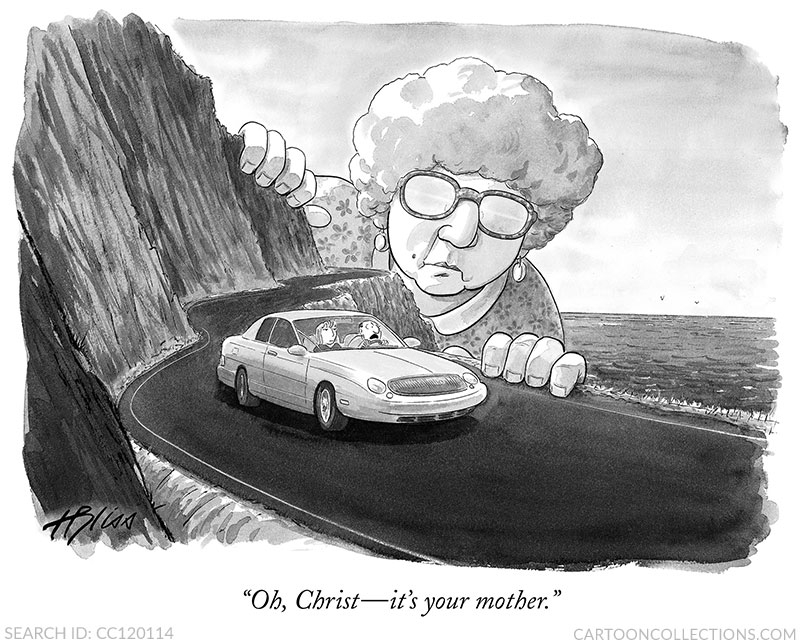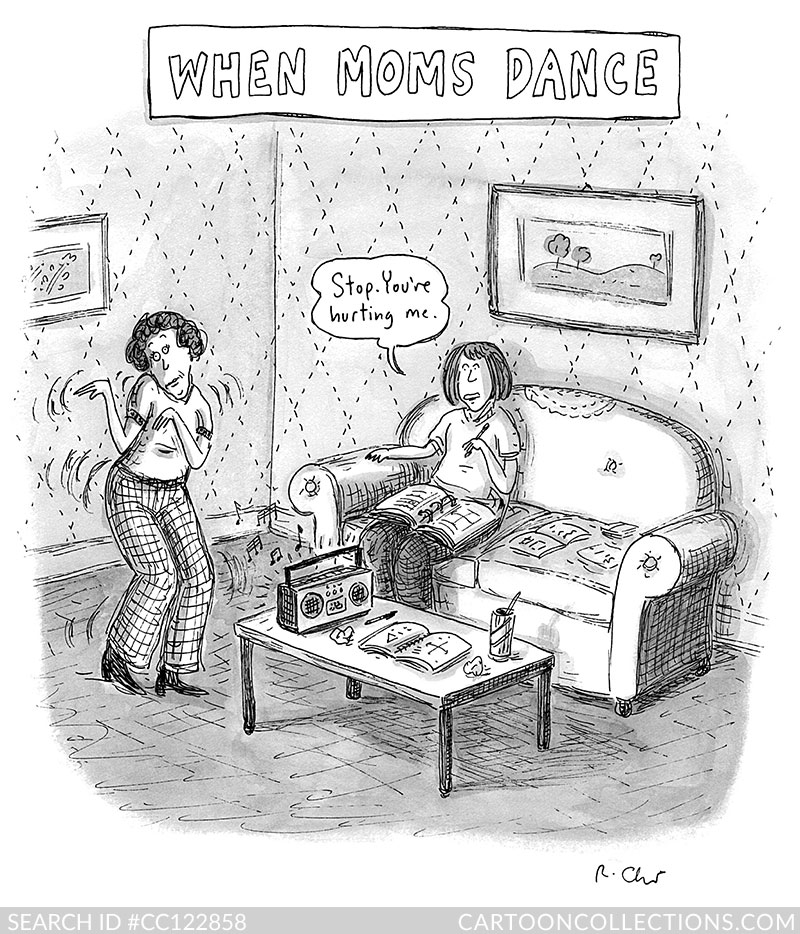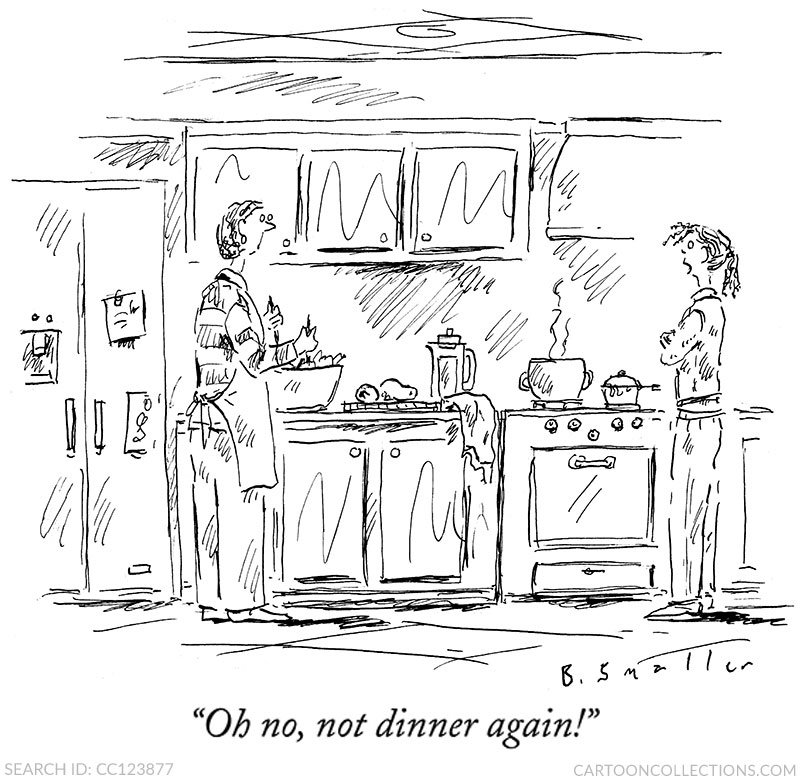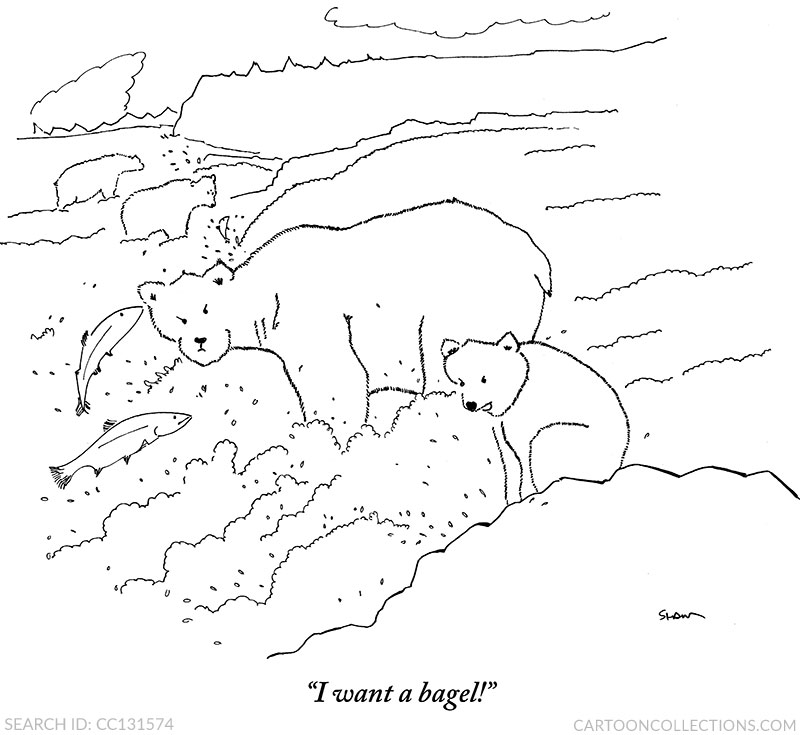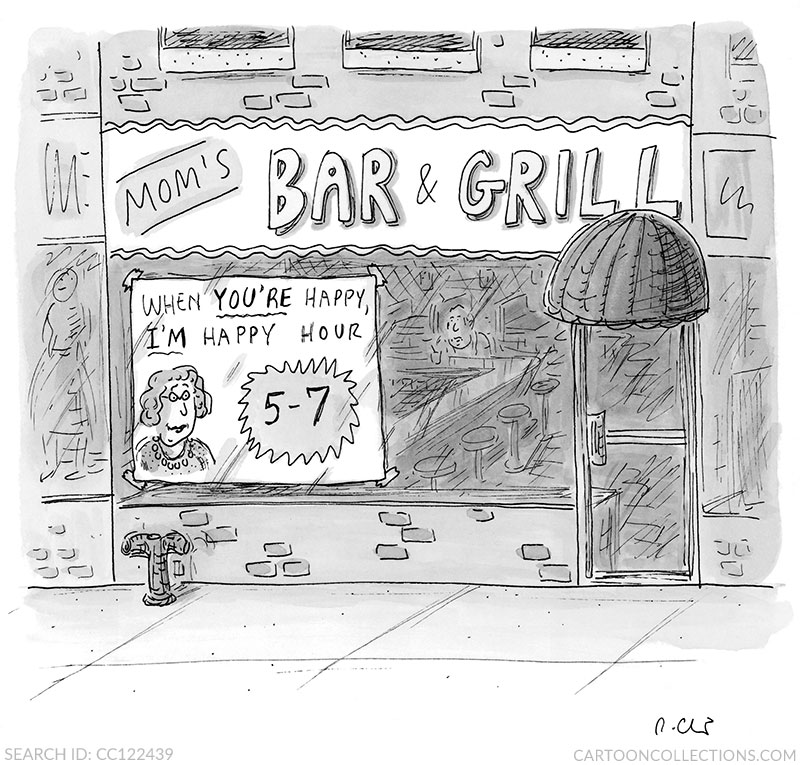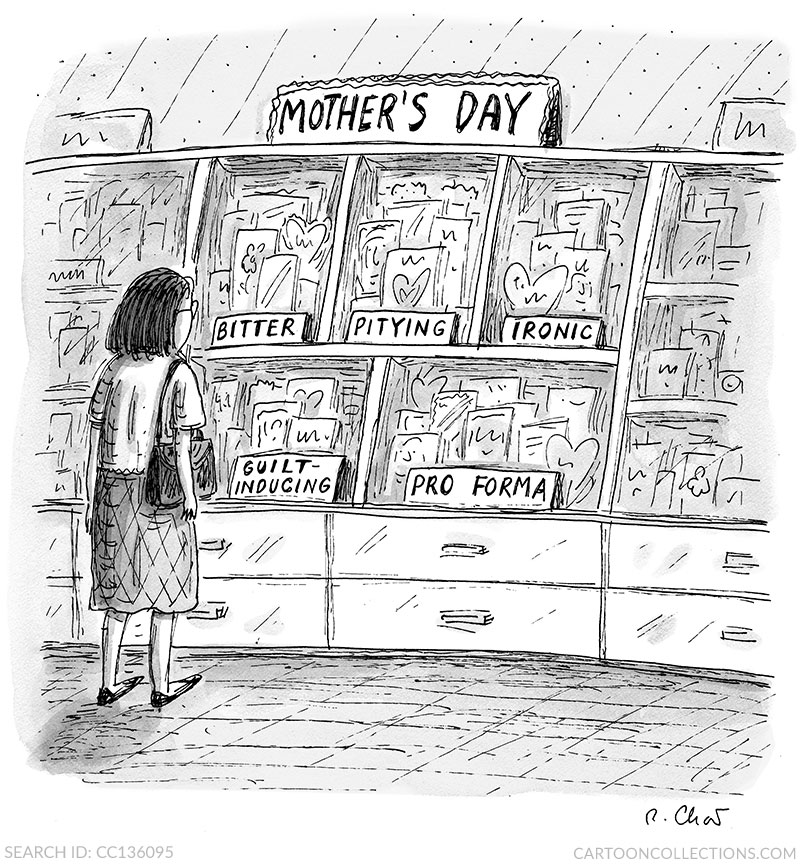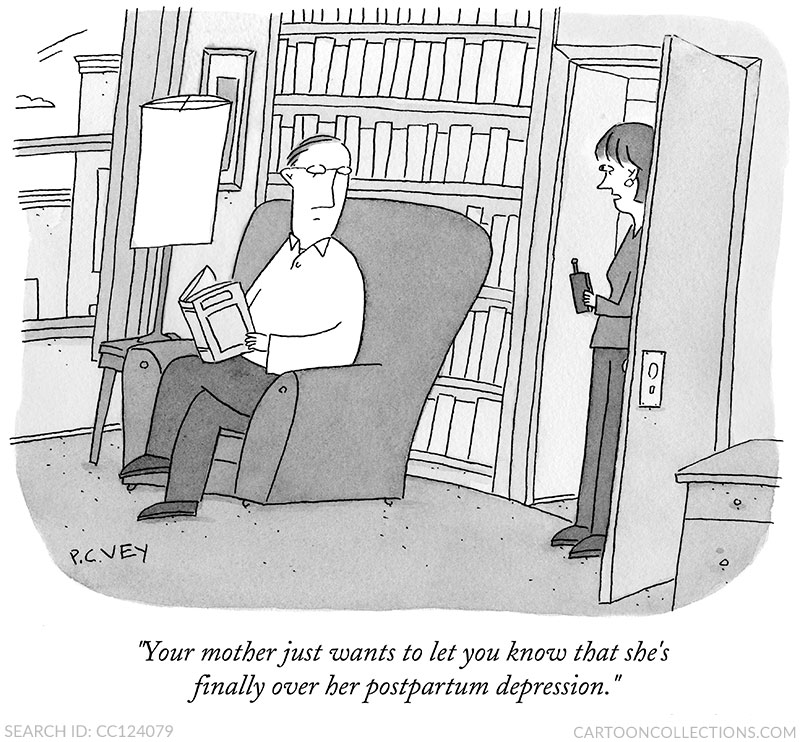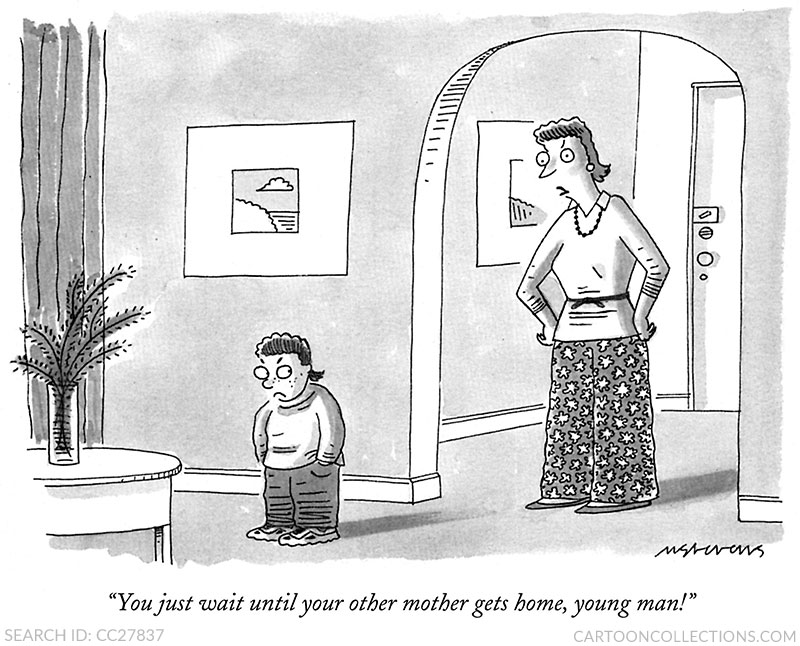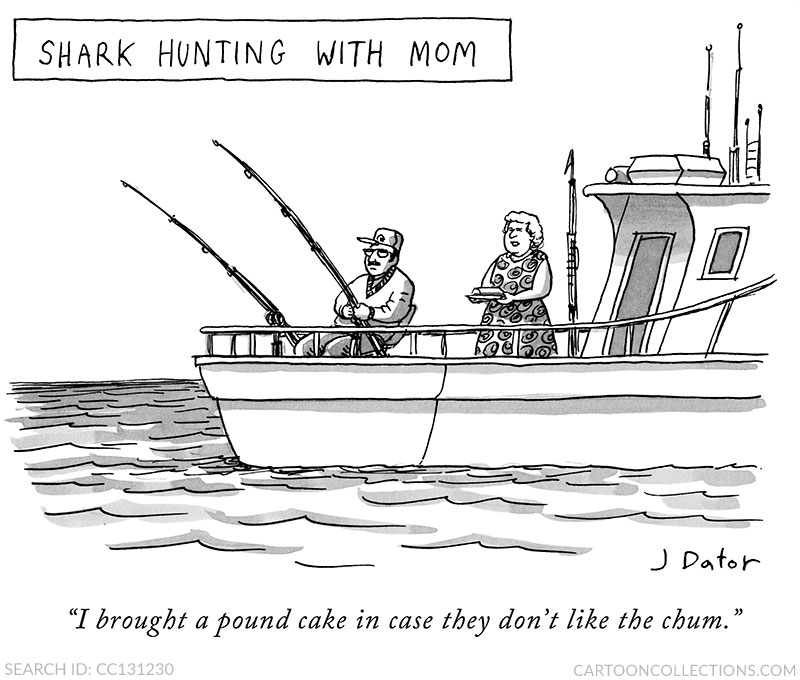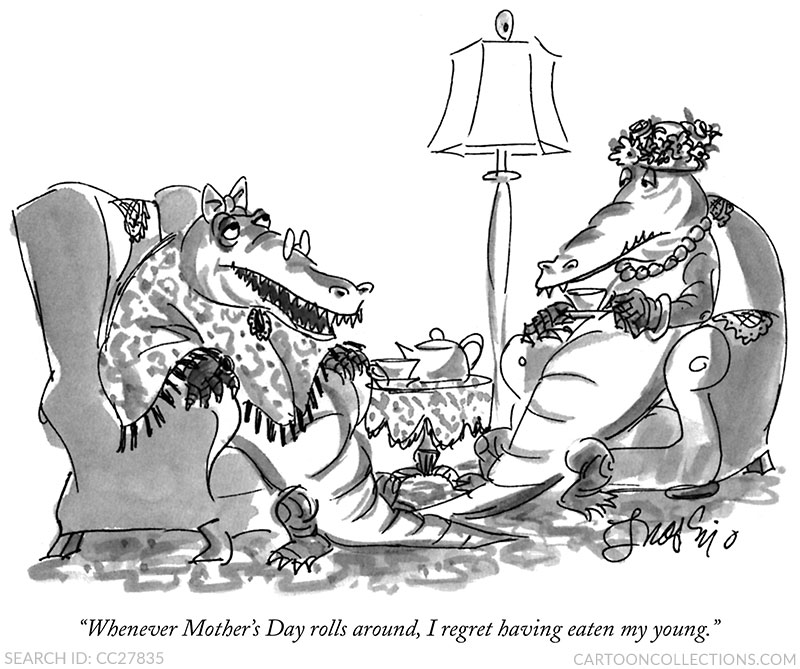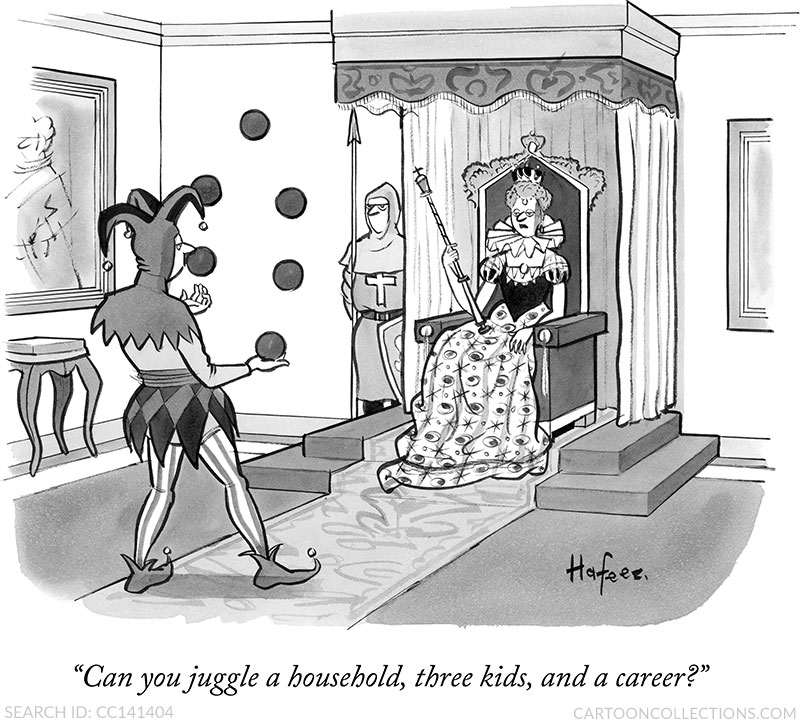 Cartoon critics Phil Witte and Rex Hesner look behind gags to debate what makes a cartoon tick. This week our intrepid critics examine cartoons about dear old Mom.
Cartoon critics Phil Witte and Rex Hesner look behind gags to debate what makes a cartoon tick. This week our intrepid critics examine cartoons about dear old Mom.
Mother’s Day—a day dedicated to the person we love most … or at least the person we have the strongest feelings toward. Naturally, many cartoons feature mothers. But there’s little humor in a loving parent-child relationship. Humor often derives from conflict, especially a conflict that we recognize in ourselves and others.
Charles Barsotti captured the stressful relationship that can develop between mother and child in this cartoon. The unseen moat is a physical manifestation of the emotional chasm that divides the king and his dear mother. The humor is downright hostile, likening a mother to an enemy invader, but the idea that even a king is not beyond the reach of his mother makes this cartoon shine. Barsotti’s spare line work brilliantly conveys the gag. And the cartoon reminds us that even kings are children, at least in the eyes of their mothers.
This Harry Bliss cartoon could be a still from “Attack of the 50-Foot Mom.” In contrast to the Barsotti cartoon, the art carries the gag. The caption almost isn’t needed. The face, the perm, the earrings, all say Mom—and quite an ominous figure she is. Here, the speaker is referring to his wife’s mother, evidently a meddling type. The message: a mother’s (and mother-in-law’s) gaze is always upon us.
Our Mother’s Day post could have consisted entirely of Roz Chast cartoons. She has addressed motherhood more completely than any other cartoonist. The moms in her cartoons are often more human, even sympathetic. Sure, they’re a source of embarrassment, but pretty much everything that a parent does embarrasses a teenager, as this cartoon illustrates. “You’re hurting me”—such a great turn of phrase. Inside info: Roz told us that this cartoon was based on an actual event that occurred in her very own household.
Often mom-bashing is simply not justified. The ungrateful teen confronting her hard-working mother is the subject of this cartoon by Barbara Smaller, a cartoonist who typically draws fully detailed, floor-to-ceiling scenes. Note the distance between mother and daughter, and the food and appliances representing the work being put into the evening meal. Again, conflict generates humor. The mother-daughter dynamic is a complex one, and thus ripe for humor with many layers.
Here’s another youngster complaining about meals. Of course animals are often given human attributes in cartoons to heighten the absurdity of the humor. In Michael Shaw’s cartoon, the unreasonable bear cub doesn’t appreciate how difficult it is to catch a leaping salmon in one’s mouth. Why a bagel and not, say, a hamburger? The cub wants a bagel to go with his (smoked) salmon, deli style.
Another Roz Chast cartoon, this one playing on the self-sacrificing, guilt-inducing mom. Yes, every good intention has a negative connotation in Roz’s world: Mom can’t be happy if you’re unhappy. “Happy hour” cartoons are plentiful, but this one improbably links Mom with a bar and grill. The picture on the poster is everyone’s mother, and you can make her happy between the hours of 5 p.m. and 7 p.m. Drink up.
Since we’re talking about Mother’s Day, we include the greeting card scenario, a common cartoon setup. Once again, Roz Chast takes a dark view of the mother-child relationship. The top three categories appear to express the adult child’s emotion, while the “guilt-inducing” category may describe the mother’s primary impulse. But the “pro forma” category may be the most biting commentary, because those cards likely disguise the daughter’s resentment with anodyne sentiments and pastel graphics.
P.C. Vey takes another approach to the guilt-inducing mother. The message is conveyed indirectly, from mother to daughter-in-law to middle-aged son. One moment he’s quietly enjoying a book, and the next moment he’s reminded of the misery he caused his mother from the moment of birth until, well, the present. So nice of Mom to call her son with the good news!
This Mick Stevens cartoon, from the mid-’90s but still fresh today, captured the expanded meaning of family. The humor turns on a cliché phrase and adds a progressive twist. Of course, to the kid, the sex of the disciplinarian parent matters not at all.
Joe Dator takes a more traditional approach to Mom—well-meaning but clueless. Shark-hunting is such a manly subject—note the harpoon—in humorous contrast with the cake-toting mom in her feminine, floral dress. The caption also balances two contrasting components: pound cake, that bland accompaniment to afternoon coffee, and chum, those bloody chunks of bait fish.
For a wildly different perspective on Mother’s Day, consider the elderly lady alligators in this cartoon by Edward Frascino. Old Mrs. Gator regrets being childless on Mother’s Day, not because she chose not to have children, but because she saw only the short-term benefits of offspring. The wonderful details of the drawing, such as the bow atop the speaker’s head, the free-flowing line, and casual use of ink wash mark this as an excellent illustration. Here, for a change, Mom has the last word.
Mom is celebrated in this classic cartoon by Sam Gross. Husband and son admire the mom who makes the stuff of nursery rhymes a reality. A single calendar day devoted to mothers does not adequately recognize the daily miracles many mothers perform. This rather sweet cartoon addresses that subject with Chagall-like mystery and charm.
We conclude with a cartoon by Kaamran Hafeez that indirectly responds to the Barsotti cartoon we began with. The queen addresses an issue that Barsotti’s king fails to recognize: raising children, running a household, and pursuing a career is more than many men can manage, and certainly more than this uni-tasking juggler could handle. This finely rendered cartoon includes the many trappings of royalty, which contrasts with the Queen Mum’s everyday workload. Let’s hope her children remember her this Mother’s Day.


